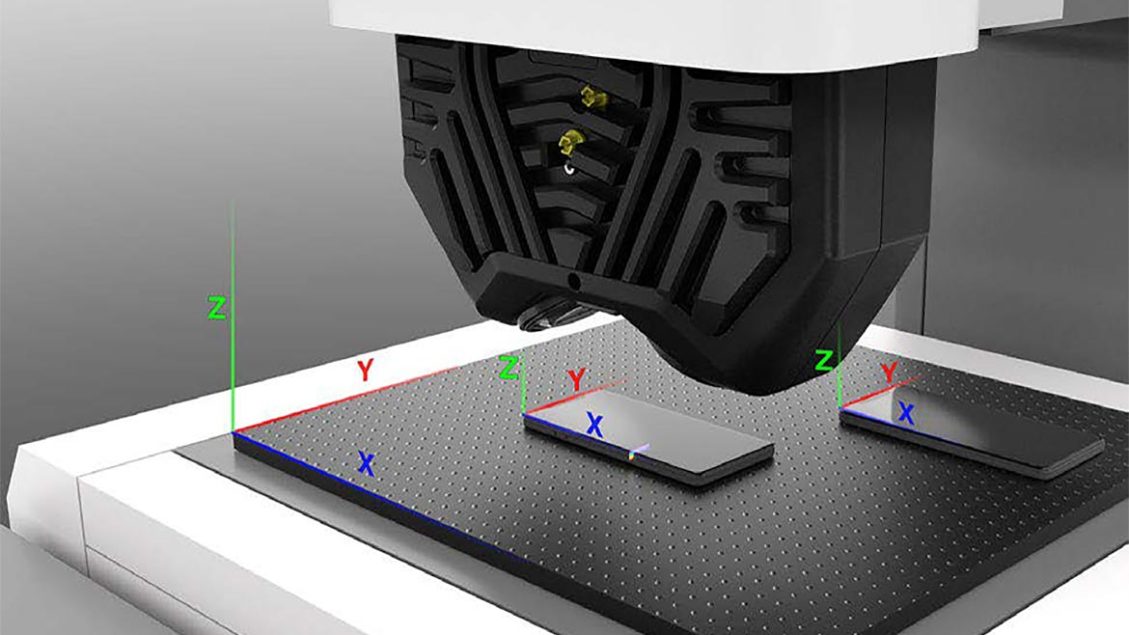The Role of Lighting in Micron-Level Defect Detection: Techniques for Optimal Quality Control
In high-speed manufacturing environments, detecting even the smallest defects — scratches, inclusions, micro-cracks — is essential to ensuring product quality and reducing waste. While choosing the right machine vision cameras and advanced sensors are integral to machine vision systems, lighting plays a critical and often overlooked role in capturing clear, detailed images for effective quality control. Proper lighting enhances contrast and exposes defects, making them easier for machine vision systems to identify, even at the micron level. This article explores the essential role of lighting in defect detection and highlights techniques that ensure optimal results in high-speed, high-precision manufacturing.
Why Lighting Matters in Micron-Level Defect Detection
Micron-level defects are tiny irregularities that are often invisible to the naked eye but can compromise the performance, aesthetics, and durability of finished products. In industries like automotive, electronics, plastics, metal, sensitive material production such as films, where the smallest imperfection can lead to malfunctions or structural issues, accurate defect detection is vital. However, capturing images with sufficient detail to detect such minute defects requires more than just a high-quality camera.
Effective lighting with 8k or 16k line scan cameras or CIS (Contact Image Sensors) cameras is crucial for several reasons:
- Contrast Enhancement: Proper lighting creates a clear distinction between the defect and the surrounding material, making even the smallest flaws visible.
- Reflection Management: Materials like polished metal or plastic can produce glare, obscuring defects. The right lighting minimizes reflections and reveals details.
- Speed Compatibility: In fast-moving production environments, lighting must illuminate defects effectively without slowing down the process.
When used strategically, lighting techniques can transform defect detection by ensuring cameras capture clear images in real-time, allowing manufacturers to maintain high-quality standards without sacrificing speed.
Key Lighting Techniques in Micron-Level Defect Detection
Different lighting techniques are suited for various materials and defect types. Here are some of the most effective lighting techniques used in machine vision systems for defect detection at the micron level:
1. Brightfield Lighting: Highlighting Surface Defects Through Direct Illumination
Brightfield lighting, one of the most commonly used techniques in machine vision, involves illuminating the object directly. This method enhances contrast for defects that have different reflectance or color properties than the surrounding material, such as inclusions, scratches, or surface irregularities.
How Brightfield Lighting Works:
- The light source is positioned directly above or around the object, illuminating it evenly.
- Light reflects back into the camera, creating a high-contrast image that highlights differences in texture or color.
Applications: Brightfield lighting is ideal for detecting contrast-based defects on non-reflective surfaces like paper, textiles, and some types of plastics. However, it is less effective on highly reflective materials, where glare may obscure defects.
2. Darkfield Lighting: Detecting Micro-Defects on Reflective Surfaces
Darkfield lighting is a technique where light is directed at a low angle relative to the object’s surface. Unlike brightfield lighting, only the light that reflects off surface imperfections (such as scratches or inclusions) reaches the camera, making even subtle defects stand out against a dark background.
How Darkfield Lighting Works:
- A light source is positioned at a shallow angle, illuminating the surface.
- Only the light scattered by surface irregularities is captured, while the flat areas remain dark.
Advantages:
- Darkfield lighting is particularly effective for detecting fine scratches, pits, cracks, and other minor defects on shiny or reflective surfaces like polished metal sheets, glass, and plastic films.
Applications: This technique is ideal for industries that work with reflective or polished materials, where surface defects can impact quality and functionality.
3. Backlighting: Edge Defect Detection and Dimensional Accuracy
Backlighting involves placing the light source behind the object, so the camera captures the silhouette. This technique provides a clear view of the object’s outline, making it highly effective for detecting edge defects, dimensional inconsistencies, or burrs on the edges of materials.
How Backlighting Works:
- The object is positioned between the light source and the camera, resulting in a high-contrast silhouette.
- The resulting image captures the object’s contour, highlighting any inconsistencies along its edges.
Advantages:
- Backlighting is excellent for identifying edge defects, ensuring dimensional accuracy, and checking for irregularities that may not be visible with other lighting methods.
Applications: Backlighting is commonly used in quality control for transparent materials like glass or thin films, as well as for products where dimensional accuracy is crucial, such as electronic components and precision parts.
4. Coaxial Lighting: Minimizing Glare on Highly Reflective Surfaces
Highly reflective surfaces can cause glare and obscure defect details in images. Coaxial lighting uses a beam-splitter to direct light at the object from a perpendicular angle, with reflected light being captured by the camera. This technique is particularly effective in reducing glare and enhancing defect visibility on glossy surfaces.
How Coaxial Lighting Works:
- A light source shines directly onto the object via a beamsplitter, creating even illumination across the surface.
- Light is reflected back into the camera, capturing a clear image without glare.
Advantages:
- Coaxial lighting reduces reflections on glossy materials, making defects more visible.
Applications: This method is particularly useful in inspecting highly polished or metallic surfaces, where other lighting techniques may fail to reduce reflections effectively.
Optimizing Lighting for High-Speed Production
In addition to selecting the appropriate lighting technique, optimizing lighting settings for high-speed production is essential. Here are a few considerations for effective lighting setups in high-speed environments:
Intensity Control
The intensity of the light source needs to be sufficient for the machine vision system to capture clear images in real-time. High-speed production lines often require more powerful lighting to compensate for the rapid movement of materials, ensuring no defect goes undetected.
Uniformity
Ensuring uniform illumination across the inspection area prevents shadowing, which can obscure defects. Diffusers are often used to create even lighting, particularly in brightfield and coaxial setups, improving consistency and accuracy in defect detection.
Strobe Lighting for High-Speed Lines
Strobe lighting, which flashes in sync with the camera’s shutter, can be used to “freeze” fast-moving products, reducing motion blur and ensuring clear, high-resolution images. This technique is particularly useful for darkfield and backlighting setups on high-speed production lines.
Lighting Angle Adjustments
Adjusting the angle of illumination can enhance defect visibility. Experimenting with different angles can provide better contrast and expose defects that might otherwise be missed. Darkfield lighting, for instance, benefits from low angles that emphasize surface irregularities on reflective materials.
Challenges and Solutions in Using Lighting for Micron-Level Defect Detection
Even with optimized lighting techniques, certain challenges may arise in high-speed production environments. Here’s how manufacturers can overcome common lighting challenges:
Glare and Reflections
Reflective surfaces like polished metals can produce significant glare, which obscures defects. Using darkfield or coaxial lighting, as well as polarizers, can reduce reflections, enhancing image clarity.
Environmental Variations
Changes in temperature, dust, or vibrations can affect lighting conditions and, consequently, image quality. Enclosing lighting and camera systems in protective housings can help maintain stable lighting and prevent dust accumulation.
Real-Time Data Processing
Capturing images at high resolutions requires substantial data processing. Edge computing allows for data processing at the point of collection, enabling real-time analysis and reducing latency.
The Future of Lighting in Machine Vision for Defect Detection
Advancements in lighting technology continue to push the boundaries of what machine vision can achieve in high-speed production. Some future trends include:
- AI-Optimized Lighting Control: Machine learning algorithms can analyze defect data to automatically adjust lighting parameters for optimal results.
- 3D Lighting: Combining multiple lighting techniques, such as brightfield and darkfield, allows for a more comprehensive analysis of surface and depth defects.
- Miniaturized and Modular Lighting: Compact lighting modules that can be positioned flexibly around the inspection area provide highly customizable setups, ensuring consistent lighting even for complex or irregular shapes.
Lighting plays a vital role in micron-level defect detection, serving as the foundation for high-quality imaging in machine vision systems. By choosing the right lighting techniques — whether brightfield, darkfield, backlighting, or coaxial lighting — manufacturers can ensure that even the smallest defects are detected accurately. Proper lighting setups not only improve defect visibility but also enhance the efficiency and speed of production lines.
As lighting technology advances, machine vision systems will continue to become more capable of detecting ever-smaller defects with greater accuracy, helping manufacturers achieve higher standards of quality control across industries.






